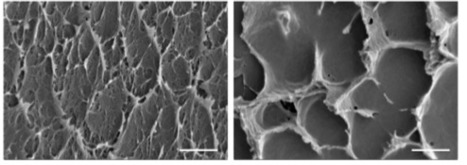
Cultured cell-derived extracellular matrix (ECM) has been used as a scaffold for tissue engineering settings to create a biomimetic microenvironment, providing physical, chemical and mechanical cues to cells and support cellular activities, mimicking the composition and organization of native ECM microenvironment. In a recent study published in Journal of Tissue Engineering and Regenerative Medicine, researchers from SCERG-iBB working with colleagues from the Rensselaer Polytechnic Institute developed a new strategy to produce different combinations of decellularized cultured cell-derived ECM obtained from different cultured cell types, namely mesenchymal stem/stromal cells (MSC) and human umbilical vein endothelial cells (HUVEC), as well as the co-culture of MSC:HUVEC and investigate the effects of its various compositions on osteogenic differentiation and angiogenic properties of human bone marrow (BM)-derived MSC, vital features for adult bone tissue regeneration and repair. These results suggest that decellularized ECM derived from a co-culture of MSC:HUVEC impacts the osteogenic and angiogenic capabilities of BM MSC, suggesting the potential use of MSC:HUVEC ECM as a therapeutic product to improve clinical outcomes in bone regeneration.



 Your new post is loading...
Your new post is loading...





